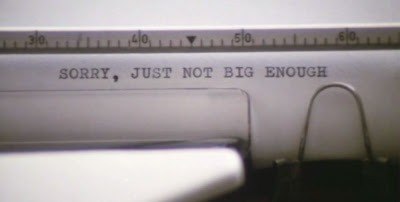I’ve said it before and I’ll doubtlessly say it again: no sooner do you create one character for a script than you have to create a second so they have someone to talk to. What’s more, they have to have bleedin’ names.
Names are so hard. Get them right and it’s impossible to imagine the character being called anything else. Gene Hunt, for instance. But there’s right and there’s familiar: Tom Rockford sounds wrong where Jim Rockford sounds spot on yet that’s what James Garner’s character was called right up to filming of The Rockford Files. (See for yourself: here’s the pilot episode script by Stephen J Cannell, who co-created the show with Roy Huggins.)
Mind you, nobody remembers why that show was called The Rockford Files. The title referred to the type of cases that this detective character would take on: as he had been wrongly convicted and imprisoned, so he was going to investigate similar miscarriages of justice. I have no idea whether he ever did and neither do you: you just know it as an especially good detective drama with a particularly charismatic lead character.
Writers set up all these thing and we needn’t: that title was specifically about the cases he takes on but it became specifically about the series. We didn’t need Jim Rockford to take on anything other detectives didn’t, we just needed him to be who he was and to open every episode with one of those great answering machine messages.
My favourite is episode 9:
ROCKFORD’S VOICE: Hello, this is Jim Rockford. At the tone, leave your name and message, I’ll get back to you.
BEEEEEEEEEP
CALLER: This is the message phone company. I see you’re using our unit, now how about paying for it?
Lots of writers spend a lot of time thinking about names. Some like their names to say something very specific about their character: Squire Allworthy is unlikely to be a right git in Tom Jones for instance. You can go far with this, viz Basil Exposition in Austin Powers.
I’m not that keen on meaningful names. I blame the parents.
But it means I’m left pondering names an awful lot. I will confess now that I used to cheat: I came up with the name Susan Hare for an early script and I thought for a long time that I would keep on using that name until one of those scripts sold. So Susan was an international jewel thief, a journalist, a 12-year-old kid, a banker and a baker, countless different things that were incompatible in age if nothing else. Only, I then realised I was writing new characters with her name in such a way that you could make all the versions fit together into one remarkable life.
I stopped. But not until after I’d used her name in a little experiment on an online service (where I gave her and a barely-intelligible male character the same computer problems to see who would help out who). And not until after I’d created a Facebook page for her. The photograph above is a version of her profile picture: I came around a corner in Cardiff Bay and saw this lonely image. By the time I’d taken that shot and tried to talk to the woman, she had vanished. So I do think of her now as Susan Hare.
I’ve lost the password to Susan’s account and it’s like she’s alive out there without me. It was her birthday the other day. She has more friends than I do. Two people I would’ve said were my friends started fighting over her.
That’s what I call a successful character name.
But what’s got me thinking about this today and wanting to talk to you about it now is not how you name characters but how you name products. Apple has just released a new free iOS app called Podcasts. You immediately know what it’s for.
The word ‘podcast’, though, is of course formed from two words: iPod and broadcast. It’s a mark of a successful product when podcasts have outlived iPods.
Maybe that success has inspired other names; maybe it’s all a coincidence that every product name is now a compound of two words. Maybe I’m only seeing this now because I’m looking for it, a la confirmation bias.
But look at the products that new Apple app is going to compete with. Instacast is the biggie: I have this and occasionally use it – remarkably occasionally since I used to produce my own podcast with UK DVD Review – and again the origin of the name is obvious. Instant podcasts. Fine.
Only, if you’re going to name something from two words, I think it behooves you to think both of what the two separate words mean and what the new compound word does too. Follow: another app for the downloading of podcasts is called Downcast.
They didn’t think that through, did they?
But at least it’s better than this. There is a clearly high-profile and apparently successful iOS app for iPad and iPhone which lets you sketch things. It’s meant to be for creating artwork and the makers would have you regard it as a highly professional piece of software. I’ve seen countless reviews of this product, none of which have appeared to notice that the name ought to have been worked on one more time.
It’s called Procreate.











